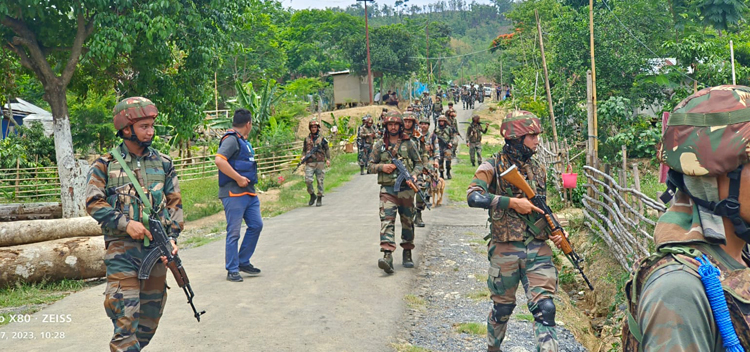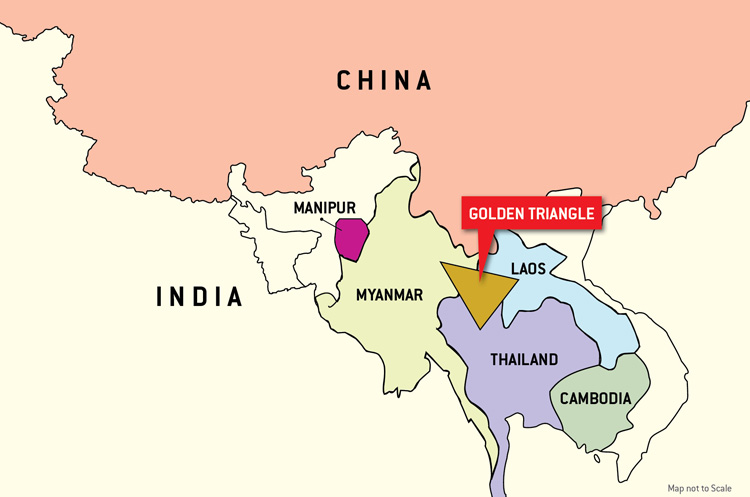INDIAN ARMED FORCES CHIEFS ON OUR RELENTLESS AND FOCUSED PUBLISHING EFFORTS

The insightful articles, inspiring narrations and analytical perspectives presented by the Editorial Team, establish an alluring connect with the reader. My compliments and best wishes to SP Guide Publications.

"Over the past 60 years, the growth of SP Guide Publications has mirrored the rising stature of Indian Navy. Its well-researched and informative magazines on Defence and Aerospace sector have served to shape an educated opinion of our military personnel, policy makers and the public alike. I wish SP's Publication team continued success, fair winds and following seas in all future endeavour!"

Since, its inception in 1964, SP Guide Publications has consistently demonstrated commitment to high-quality journalism in the aerospace and defence sectors, earning a well-deserved reputation as Asia's largest media house in this domain. I wish SP Guide Publications continued success in its pursuit of excellence.
- Operation Sindoor: Resolute yet Restrained
- India’s Operation Sindoor Sends a Clear Message to Terror and the World – ‘ZERO TOLERANCE’
- Japan and India set forth a defence cooperation consultancy framework, talks on tank and jet engines
- Terrorist Attack in Pahalgam in Kashmir: Unfolding a long surgical war against PAK
- Lt General Pratik Sharma takes over Command of Indian Army's Northern Command
India's Exposed Eastern Flank
The deep-rooted turmoil due to drugs, land rights, and historical divisions has unleashed chaos in Manipur
 |
The Author is former Chief of Staff of a frontline Corps in the North East and a former helicopter pilot. He earlier headed the China & neighbourhood desk at the Defence Intelligence Agency. He retired in July 2020 and held the appointment of Addl DG Information Systems at Army HQ. |

Manipur is on the boil. As the long simmering Meitei - Kuki - Naga ethnic discontent ignited on May 3, 2023 in Churachandpur, the country's attention was once again diverted to the Northeast. Over the past two months, more than 60 people, including women, have been killed and hundreds injured while some 1,700 houses have been burned down. About 35,000 people were shifted to camps set up by the Assam Rifles and the Army during the violence. Truce brokered by the state government as well the centre have unfortunately been found to be fragile. Sporadic violence, shootings and torching of public and private property including those belonging to ministers often interrupt the uneasy calm. Political parties have jumped in to further muddy the waters and frenzied blame-game is order of the day.
Over the past two months, more than 60 people have been killed, hundreds injured, and 1,700 houses burned down in Manipur's ethnic unrest.
But flareups in the Northeast are nothing new. Dating back to the colonial times, the politics of identity and self-determination have led to internal and external security challenges there. In late fifties, the Nagas led a well-oiled insurgency to gain independence under the umbrella of NSCN, undeniably sponsored by the old colonial powers through camps and operatives in Myanmar and in the then East Pakistan (now Bangladesh), ably aided by the Pakistan ISI. Then followed insurgencies by the Mizos, the Bodos and the ULFA as well as numerous breakaway groups that used the porous Myanmar borders and their ungoverned provinces combating separatist insurgencies of their own. China has exploited the situation to the hilt by giving sanctuary to fugitives (ULFA chief Paresh Barua is in Yunnan) and facilitating arms supply, some of which ultimately land up with Maoist insurgents in the hinterland.
But without drowning out the current Manipur turmoil in a plethora of historical fault lines and obfuscate what triggered the crisis, let me focus on two immediate sparks that lit up the fire - drugs and land rights.
Truce efforts by the state and central government have proven fragile, with sporadic violence and property damage continuing to disrupt the uneasy calm.
DRUG MENACE IN THE STATE
Manipur has had a drug problem for decades, thanks to an ancient trade route that connects it to Southeast Asia and therefore to the infamous Golden Triangle. In geographical terms, this is a tri-junction where the Mekong River, at a confluence point, splits the landmasses of three nations—Myanmar, Thailand and Laos. As China gained independence, internal power struggle began between Mao Zedong's communist Red Army and Chiang Kai-shek's Kuomintang (KMT). The KMT soon retreated and two divisions of their army ended up taking refuge in Myanmar's northern Shan State in 1950.

As the KMT troops in Myanmar assisted by the US waited for an opportunity to regain China, they turned to streamlining poppy cultivation and refining practices already prevalent. Myanmar ultimately complained to the UN, and growing realisation that China could not be retaken led the US to pressure Taiwan to evacuate the KMT from Myanmar. The infrastructures for drugs they left behind were taken over by local warlords. Thus, was born the notorious Golden Triangle.

Manipur became a natural and major transit route for the Golden Triangle drugs. In a state of just about 3 million people, over 30,000 are confirmed drug addicts and most are afflicted with the related HIV/AIDS too. In the last few years, Manipur became a source and not just a route of this international drug trafficking network. The extended nationwide Covid lockdowns starting March 2020, and Myanmar plunging back into chaos and lawlessness since the February 2021 military coup helped spread this new poppy cultivation culture. It has also led to extensive and severe deforestation of hillsides. The government's resolute "War on Drugs" which involved burning poppy cultivations and eviction of illegal occupation of reserve forests by mostly Kuki-Chin illegal migrants provided the first spark. It is a direct challenge to the narcoterrorism gang lords and their international (mostly Chinese) handlers. Needless to say, numerous local politicians have deep connections to these operatives and their drug money. Hence the extreme violent fightback and vilification of the Manipur government's war on drugs as something directed against one community only.
RIGHTS TO LAND OWNERSHIP
Secondly, Manipur has a peculiar geographical hill-valley divide, first sowed by the British and further entrenched by ruinous land laws adopted post-independence. Though there are about 32 tribes in the state, the Meitei's who are largely Vaishnavas and make up about 53 per cent of the population are restricted to just 10 per cent of the landmass in the Imphal valley. This is due to some calamitous steps adopted in early fifties that not only deprived them of scheduled tribe status but also forbade them from buying land in the hills that comprise 90 per cent of the area. The hills are occupied by Kukis (28 per cent) in the inner ring and Nagas in the outer ring. Mostly Christian, they have ST status and are free to buy land in the valley.
Historically, insurgencies driven by identity and self-determination have plagued the Northeast, with the Nagas, Mizos, Bodos, and ULFA leading separatist movements.
The anger amongst the Meitei have been simmering for long, demanding ST status as not only their expanding population were restricted to the valley but also because they were also losing even that land gradually as Kukis began to buy up land there. It is suspected that the church may be involved in funding this land grab. On April 10, 2023, the Manipur High Court directed the State government to consider the request and send a recommendation to the Union government for its consideration, upping the ante.
HISTORICAL EFFORTS TO DIVIDE
The British had long cherished a dream to slice the Northeast from rest of India and carve out a Christian country in the region. During colonial times, it enforced an inner line permit to apparently protect the tribes in the hills but pushed evangelists to convert the nature worshiper tribes to Christianity. Many billboards in Nagaland openly splash "Nagaland for Christ" and outfits have been demanding a 'Greater Nagaland' (Nagalim) that includes large parts of Manipur. The possibility of this mission getting a renewed thrust cannot be ruled out in the run up to 2024 elections in concert with the other separatist plots for Khalistan and Ghazwa-e-Hind.
The violence, arson and looting as well as deaths in Manipur are an unfortunate upshot of tragic historical fissures which are now deftly being exploited by the drug mafia and anti-national syndicates. Relentless action on narcoterrorism must continue alongside steps to remove obscure and discriminatory land laws. Manipur needs a calming hand. But it may have to wait as the fractures are deep and complex.





